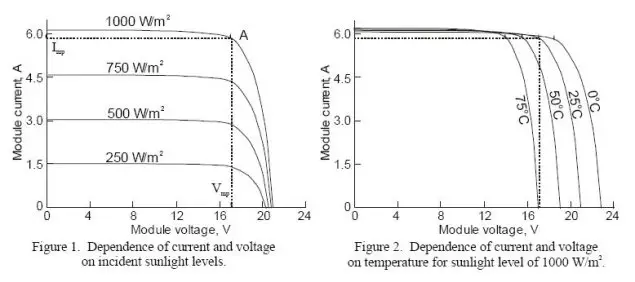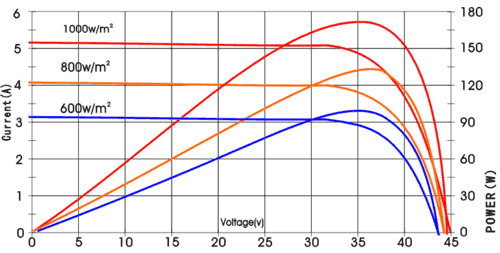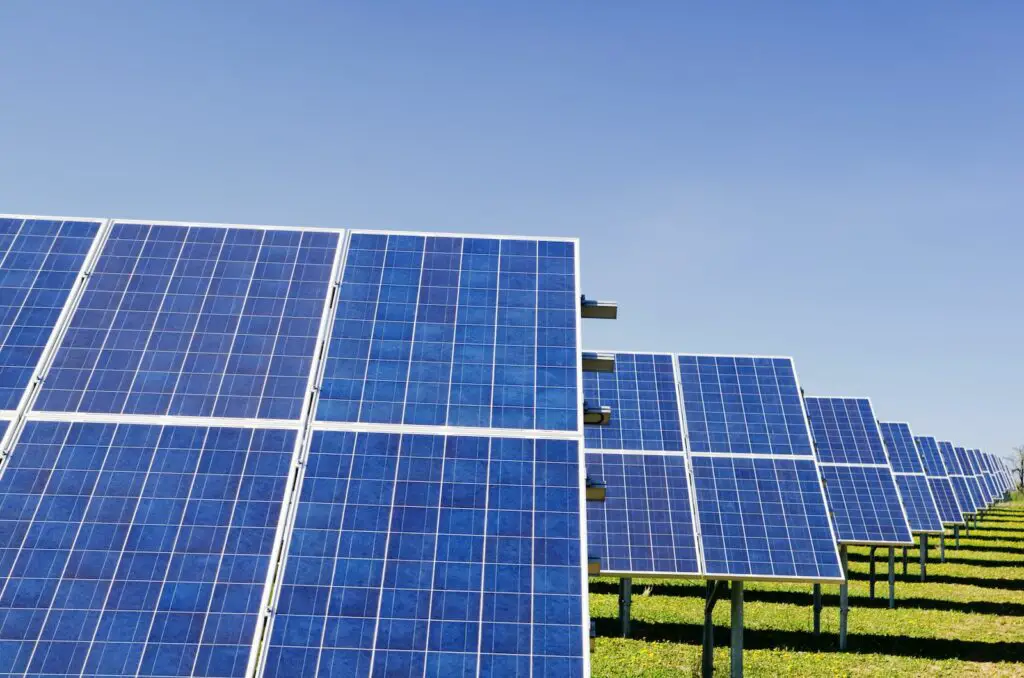No, shorting a solar panel won’t harm it. Solar panels are made to work almost at their maximum current all the time.
A simple way to check a solar panel is to connect it to an ammeter in a short circuit. If a solar panel gets damaged in this test, it’s likely already faulty. Normally, solar panels work best at around 90% of their maximum current and 70% to 85% of their maximum voltage. More efficient panels have a higher best operating voltage, usually about 85% of the maximum voltage.
The difference between the best operating point and a short circuit in terms of energy loss is very small. This is because solar panels almost always produce the same current.
There’s a diagram that usually shows how solar panels work.

“Sunshine level” is technically called “insolation.” The diagram on the left shows how different light levels affect the panel. 1000 Watts per square meter is a common standard for maximum output. The actual highest light level happens around midday in summer and can vary from below 1000 W/m^2 to about 1300 W/m^2. The temperature isn’t specified, but tests are usually done at a constant 25 Celsius.
The diagram on the right shows how the panel’s temperature changes in full sunlight.
In both cases, the current of the panel stays almost the same for any chosen setting, while the voltage changes. A voltage of 0 means a short circuit, and the highest voltage means an open circuit.
As the panel gets more load, its voltage drops, and the current quickly goes up to almost its maximum. For most of its range, the current is very close to its maximum.
The diagram shows how the current, voltage, and power of a solar panel change with different sunlight levels.

Take the red curve as an example. When the load on the panel increases from no load (about 44 volts and 0 amps) to full load (0 volts and 5.2 amps), the power goes up fast – from 0 watts at 44 volts to 150 watts at 40 volts. It reaches its highest point at about 36 volts and 5.8 amps, then decreases slowly as the voltage goes down. The highest power point, called the Maximum Power Point (MPP), is where the panel produces the most energy. At this point, the current is a bit lower than its maximum but not by much – 5.2 amps at full load and 4.8 amps at MPP. So, at MPP, the current is about 92% of its maximum.
At MPP, the voltage is 36 volts, or 82% of its no-load value. If the panel worked at full load, the current would be only about 10% more than at its MPP. The red, orange, and blue curves show that both the current and voltage at MPP change with different sunlight levels. Adjusting the panel to achieve MPP under all sunlight levels is called Maximum Power Point Tracking (MPPT), which is a complex topic.








